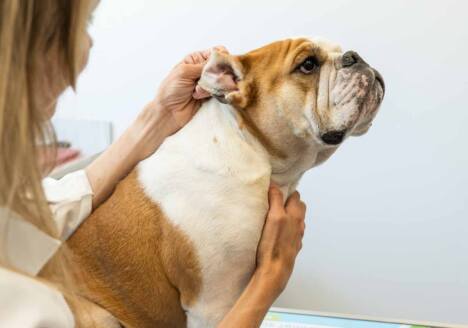Warmer weather means more time spent outdoors. Exploring nature with your pet can be a rewarding experience. But before you head out, make sure they’re ready for the adventure!
Tips on How to Keep your Dog Safe when Hiking.
Hitting the Trails: Hiking with Your Canine Companion
- Trail Savvy: Before setting out, research the trail’s difficulty, terrain, and potential hazards. Some trails may be too challenging for certain breeds or physical conditions. Check for any specific warnings or restrictions.
- Hydration Heroes: Pack ample fresh water for both you and your pet. Dehydration can quickly set in, especially during hot days. Carry a portable water bowl for easy access.
- Leash Laws and Identification: Always keep your dog on a leash, particularly in sensitive habitats or areas with potential dangers. Ensure they wear a collar with up-to-date identification tags or a microchip in case of separation.
- Paw Patrol: Protect your dog’s paws from rough terrain, sharp rocks, and hot surfaces. Consider using dog booties, especially on extended hikes.
Campfire Companions: Camping with Your Furry Friend
- Campground Considerations: Before booking, verify the campground’s pet policies, including leash requirements, designated pet-friendly areas, and any breed restrictions.
- Home Away From Home: Create a comfortable space for your pet by bringing their bedding, crate, or a familiar blanket. This provides a sense of security and helps them relax in unfamiliar surroundings.
- Tick and Cheatgrass Vigilance: Regularly check your pet for ticks and cheatgrass, especially after exploring wooded or grassy areas. Central Oregon has an abundance of both, especially during the summer months.
Paddle Boarding and Boating with Your Pet
- Gradual Introduction: If your pet is new to water activities, introduce them gradually. Start with short, calm sessions to acclimate them to the motion and environment.
- Life Jacket Essentials: Even strong swimmers should wear a properly fitted pet life jacket. This provides crucial flotation in case of accidental falls.
- Waterway Awareness: Stick to calm waters, avoid strong currents and boat traffic, and be aware of potential harmful algae blooms.
- Sun Protection: Pets can get sunburned, too. Provide shade and limit direct sun exposure during your water adventures.
Be Prepared for an Emergency
Despite careful planning, accidents can happen. Be prepared for any situation:
- Pet First Aid Kit: Always carry a pet first aid kit with bandage materials to address minor injuries.
- Benadryl Basics: Consult your veterinarian about the appropriate dosage of Benadryl for your pet in case of allergic reactions, such as bee stings.
- Hydration is Key: Water is essential for hydration and can also be used to flush wounds.
- Calm and Collected: Your pet can sense your anxiety. Stay calm and reassuring during emergencies.
- Veterinary Contacts: Save your emergency veterinarian’s contact information in your phone for quick access.


